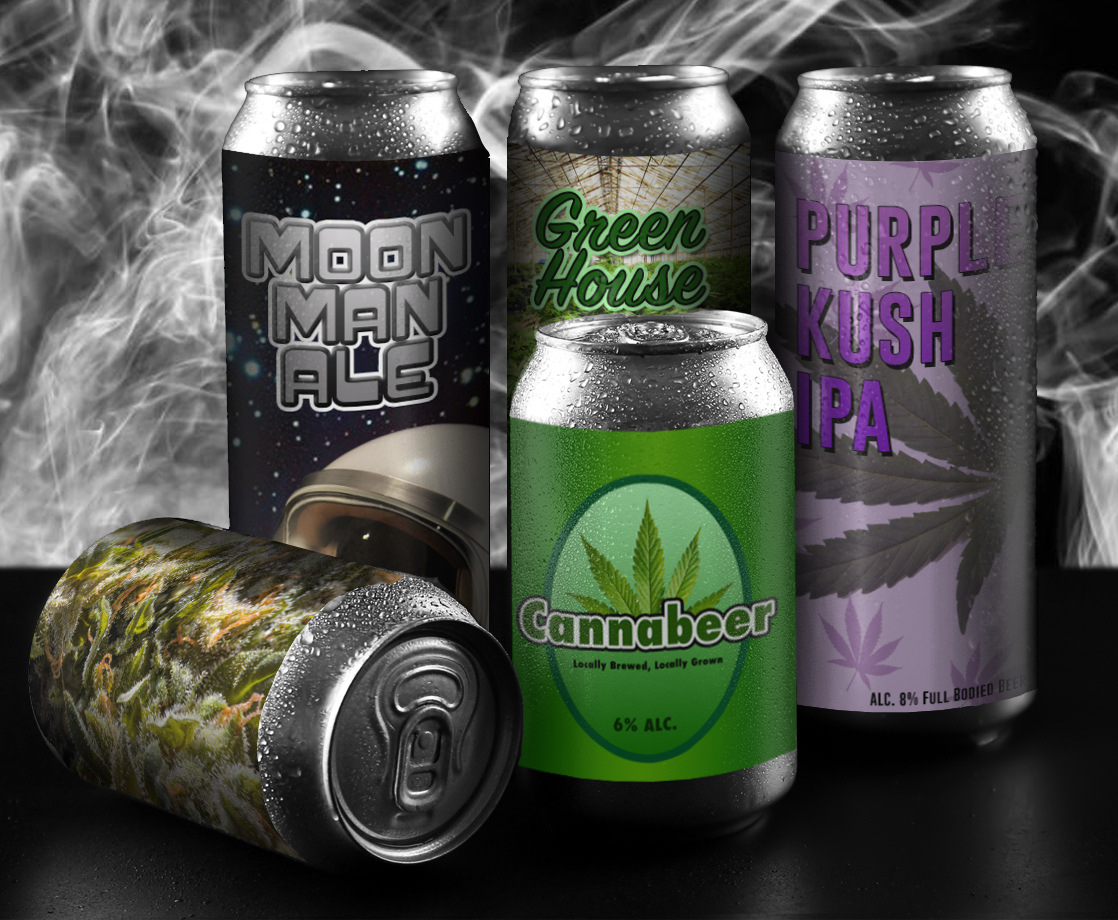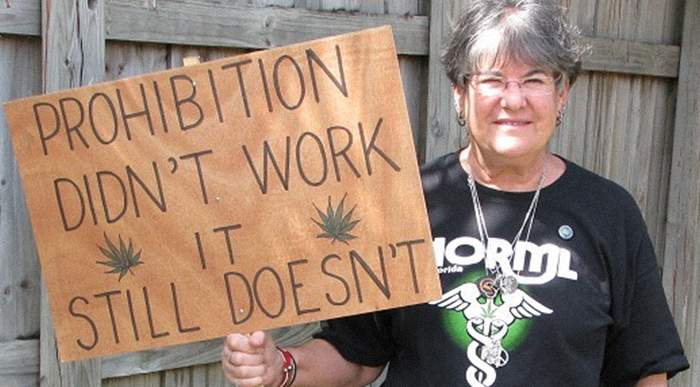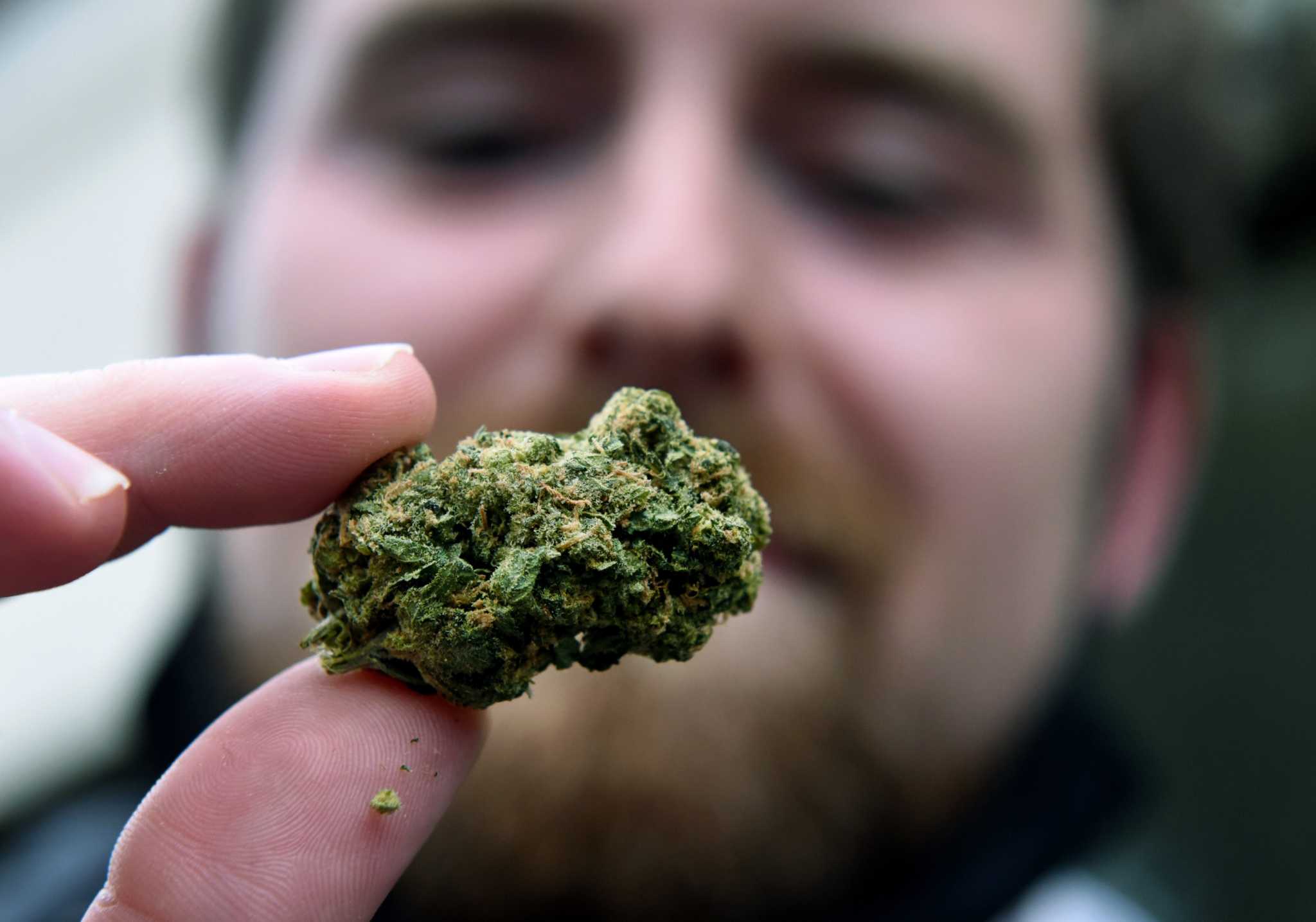You sidle up to the bar. “Can I grab a pint of the lager?” you ask, a question you have asked probably a zillion times without difficulty. This time, however, you get a question back: “Sure — alcohol, THC, CBD?”
It’s kind of a hammy hypothetical, but for some in the cannabis industry, it’s a shared vision of a future where Big Weed is held in the same esteem as its fellow Bigs — Alcohol, Tobacco, and Pharma. One of the areas where the industry is hoping to do that is through cannabis beverages — sometimes referred to as “drinkables” — a sector of the industry that’s gaining the interest and investment dollars of mega-corporations within the beer and liquor industry.
With the exception of CBD, few cannabis products have received as much corporate hype as weed-infused drinks. “Weed Drinks Are Set to Dominate the Cannabis Market in Canada,” reads one headline. “This Is the Canadian Cannabis Startup That Claims It Will Disrupt the Alcohol Industry,” reads another. At the end of July, there was an entire conference in San Francisco dedicated to drinkables. The recent unveiling of Canadian regulations for edible and drinkable products, which will be available on the legal market in December, has done little to temper this excitement.
But the more you hear about them and how they’re the next frontier for cannabis, the more you begin to entertain the idea that the hype around weed drinks — both as a product and as a concept — could be an illusion. More and more, it seems that weed drinks represent the fantasies of every cannabis company exec who wants to figure out how to sell weed to wine moms and soccer dads — consumers who are new to the legal weed market, and for whom something presented in a familiar format (like a wine or a beer) might be all it takes to get them into using cannabis regularly.
But above all, weed drinks are a signal of where cannabis is going — that is, infused into every product that will take it, in hopes of finding the perfect product that dissolves all boundaries between people who use cannabis and people who don’t. So far, no pot grower has yet nailed what some hope will be the holy grail for the industry: the weed you can bring as a dinner party gift, the cannabis product you can give your coworkers as a gift. A new crop of weed drink makers think they can get it right. They’re ready for their moment. But behind all the hype lies one big unanswered question: Is the weed drink market even one worth chasing?
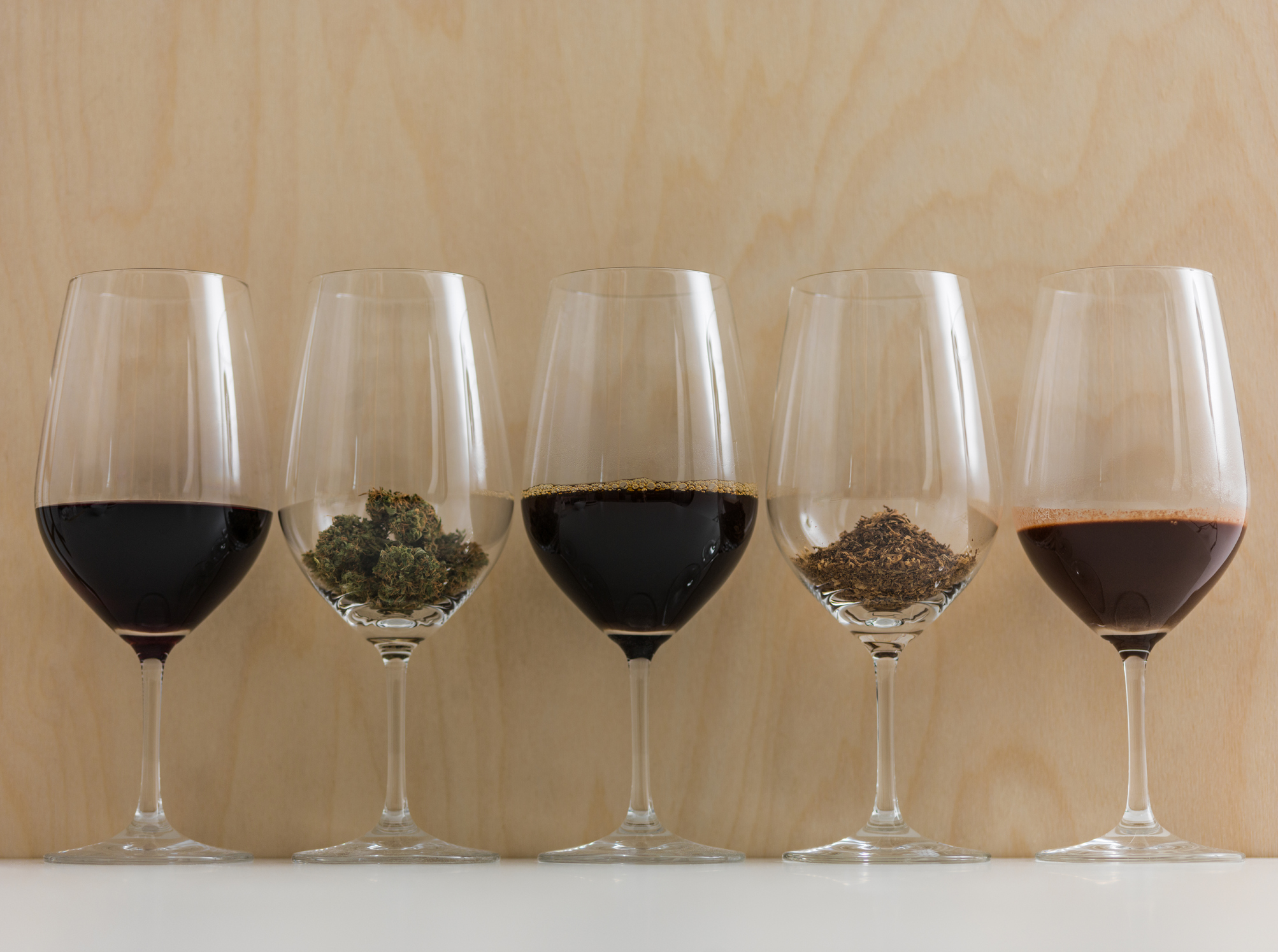
Weed Drinks Are Catching the Eye of Big Alcohol
Big Alcohol has long been worried about the threat that legal weed has posed to their core business of intoxicating people. Over the last decade, alcohol industry lobby groups have been regularly involved in efforts to fight legalization measures. Mostly, those fears haven’t panned out — but there’s a new concern that cannabis in drinkable form could have the potential to bite into alcohol sales.
Back in 2016, most of the alcohol industry seemed publicly opposed to cannabis legalization, seeing it as a threat; those companies who mused publicly about getting in on it were seen at the time as the exception, not the norm. Constellation Brands, one of the biggest beverage companies in the world, which owns brands such as Corona, Modelo, and Svedka, would be one of the first to break towards cannabis in 2017. The multi-national giant reportedly considered getting into the cannabis space on its own, but eventually chose to partner instead with the then-burgeoning Canadian firm Canopy Growth. It started by purchasing a small 9.9% stake in the company in October 2017, and then followed that with a massive $4 billion buy the following year, giving Constellation 38% of the company and four of seven spots on Canopy’s board.
The high-profile and high-value deal was a landmark one, definitively signaling the alcohol industry’s desire to tap into the cannabis market. Though Canopy is very guarded about its product development, former CEO Bruce Linton told investors in 2018 that the company was working on beverages for “the past three years,” according to a quote cited by a report produced by German investment bank Berenberg. Constellation Brands reportedly did a year’s worth of due diligence on Canopy (“They spent a year living with us,” Linton told Bloomberg) before making that deal. From Constellation’s perspective, you don’t spend $4 billion on nothing.
Canopy is using some of Constellation’s money and expertise in the building of a massive bottling facility in Smiths Falls, Ontario, on the site of a former Hershey’s Chocolate factory that closed in 2007. Around town, Canopy is seen as an economic lifeline; the sizeable investment from an alcohol company (and the construction of a large bottling facility) means more jobs and more economic activity.
Constellation is taking a not-insignificant bet on weed drinks, as well as on the cannabis industry itself. The company’s massive investment in Canopy bought it influence over the largest cannabis company in the world — and it hasn’t been afraid to use it. On July 3, after Canopy posted poor earnings, the company’s CEO Bruce Linton was fired in a move that was widely seen as Constellation forcing him out. (Canopy had also recently appointed a Constellation loyalist to be its chief financial officer.) If nothing else, it clarified who really appears to rule the roost over at Canopy: a booze company.
The alcohol monolith is not the only corporation of its kind going in on the weed drinks industry. A couple hours away, in Toronto, sit the offices of Truss, a partnership between another large Canadian producer, Hexo, and the beer giants Molson Coors. The company has been pretty mum, with no major product teases or apparent publicity pushes since Truss was founded in early October 2018. Other prominent beverage companies are starting to invest in weed drinks coming out of Canada, too. AB InBev, owner of Budweiser, is partnering with Canadian producer Tilray in a $100-million deal intended to create cannabis beverages. One source also suggested, speaking on background, that Sleemans (which is owned by Japanese beer company Sapporo) is working on moving into the weed drinks space, as well.

Can Weed Drinks Really Replace Alcohol?
Terry Donnelly is one entrepreneur who is hoping to cash in on the weed drinks market. His company, Hill Street Beverages, has plans for a line of cannabis beers and wines, which hopes to be available when edibles and drinks go on sale in Canada in mid-December. Hill Street “expects to compete with alcohol,” said Donnelly, in a phone interview. “We’re planning our whole business on creating an alternative to alcohol.”
“There’s been a lack of acceptance of [cannabis] beverages in the US, mostly because of technology and pricing,” Donnelly added. Weed drinks in America “are not competitive with alcohol; they’re competitive with cannabis.” A lot of them are made, he said, by adding cannabis oils to existing beverages. But the oil can separate and float to the top. Canadian drinks are seen by the industry as more promising in this regard. Many of the companies making them have sophisticated production facilities and the money to spend on developing technology that produces a more natural beverage.
Dooma Wendschuh, a serial entrepreneur, has been working on a cannabis beverage formulation since 2016. His patent-pending method actually brews his cannabis beer directly from stalks and leaves of the cannabis plant. The result, he explained, is a drink that has cannabinoids in it from the start, rather than added through infusion. “No one is making the beverage from cannabis,” he told MERRY JANE. “Every company is infusing.” (Wendschuh also claimed to be contract brewing for eleven different companies out of his facilities. He declined to name them, citing non-disclosure agreements.)
But it’s not just that the drinks will be more consistent and cheaper — it’s that Canadian weed drink makers seem to be more focused on the goal of making their products less like weed and more like beer. Brewing a weed drink that hits you in five minutes, peaks at 15 minutes, and wears off in a tight 90 — shortening, in effect, the regular duration of getting stoned — is the technological goal. The belief among those in the industry seems to be that if cannabis can be formulated in a way that is familiar to beer and wine drinkers, in a way that vibes with the rhythm of a night at the bar, that it can then be positioned as a substitute to alcohol. And if there is anything that is putting the fear into alcohol companies, it’s the possibility that, in people’s minds, weed drinks and alcohol drinks are placed in the same product category.

Beyond all the hype and optimism surrounding weed drinks, and the idea that they can be made to mimic alcohol, a major question mark (or two) remains. The first big one is that it’s not at all been proven that any of these new Canadian beverage makers have the technical capacity to create weed drinks that behave like alcohol, at least not publicly; the expectations around weed drinks rest largely on the attestations of their creators. There’s basically no standard model for what a cannabis drink should look like. The blockbuster partnerships — Constellation/Canopy, MolsonCoors/HEXO, AB InBev/Tilray — have kept their product formulations close to the chest. “This kind of thing is a secret that people are guarding closely,” said Wendschuh.
Even Wendschuh, who is one of the biggest evangelists for the weed drinks market out there, can only admit that he “thinks we’re getting closer” when I asked him if the technology is completely where he wants it to be. The big challenge, he said, is getting the effect of the cannabis in the drink to wear off in roughly the same time frame as booze. “We’re still developing,” he said. “You see people picking away at these really easy problems to solve, and these really hard ones remain unsolved. We’re focusing on the hard things.”
“The drink market in cannabis — it’s almost like being back in 1940 and someone comes to you and showed you this thing they built called the computer,” Wendschuh continued. “I think cannabis beverages are similarly in their infancy.”
Isn’t it a somewhat concerning comparison, since the computer took another 40 years or so to reach a mass market? I asked.
Wendschuh would rather not focus on such problems. “It’s one of those things that we look at, and it’s very easy to see the problems,” he said. “When you look at all the problems, you might say this is going to be slow to take off… But do you do this because you want to become insanely wealthy, or do you do this because you want to make the world a better place?” (We’re still talking about weed beer.) “I’m happy for both, but I’ll settle for the second.”
The market allure of weed drinks is enough to tempt more boutique players from the craft cannabis and craft beer markets. Dan Sutton, the CEO of Tantalus Labs — a licensed cannabis producer based in Vancouver with a reputation for its attention to detail and top-shelf cannabis — announced earlier this summer that he was getting into the weed drinks business via a partnership with Postmark Brewing and Craft Collective Beerworks. But he’s tempering his investment a bit. “It’s all about starting small and not making ridiculous bets,” he told MERRY JANE. He’s going into it with a mindset less that he’s tapping into some nascent consumer demand, but rather creating new ones. “This is a market we’ll all have to build, because this is a market that doesn’t exist [right now].
“We’re not banking on the mass acceptance of the beverage market,” he added. “Like any new product category, it’s going to take some time to see where the market sits, but we’re in this for the long game.”
The former creator of the craft beer Blue Moon, Keith Villa, recently launched a line of cannabis beverages called Ceria. The brand has been performing well in Colorado, and is about to expand into California. The market for cannabis beverages, he told MERRY JANE, “is small relative to the alcoholic beverages market, but it’s growing quickly.” He claimed to have seen triple digit growth since the brand launched in December.
Ceria is basically brewed as a craft beer, and then undergoes a process to replace the alcohol with water-soluble THC. (Villa has a PhD in brewing science; he called the production process “painstaking.”) The result is something that tastes a lot like a beer, rather than something sweet. That’s not an accident: He sees the market for weed drinks comprising people who still want beer in principle, but don’t want the particular form of intoxication that alcohol brings.
“We also get a lot of consumers who are military veterans who cannot drink alcohol anymore, because they are either on medication or won’t drink for other reasons,” he noted. They also get a lot of younger people who don’t want to drink alcohol, but still “want something that’s more adult tasting.”
“Our philosophy at Ceria is to help people enjoy it socially and to stay in control, which is the reason we’re focusing on low-dose products,” he said. Their canna-beers have around 5mg of THC, and they’re introducing an IPA that has 10mg soon.
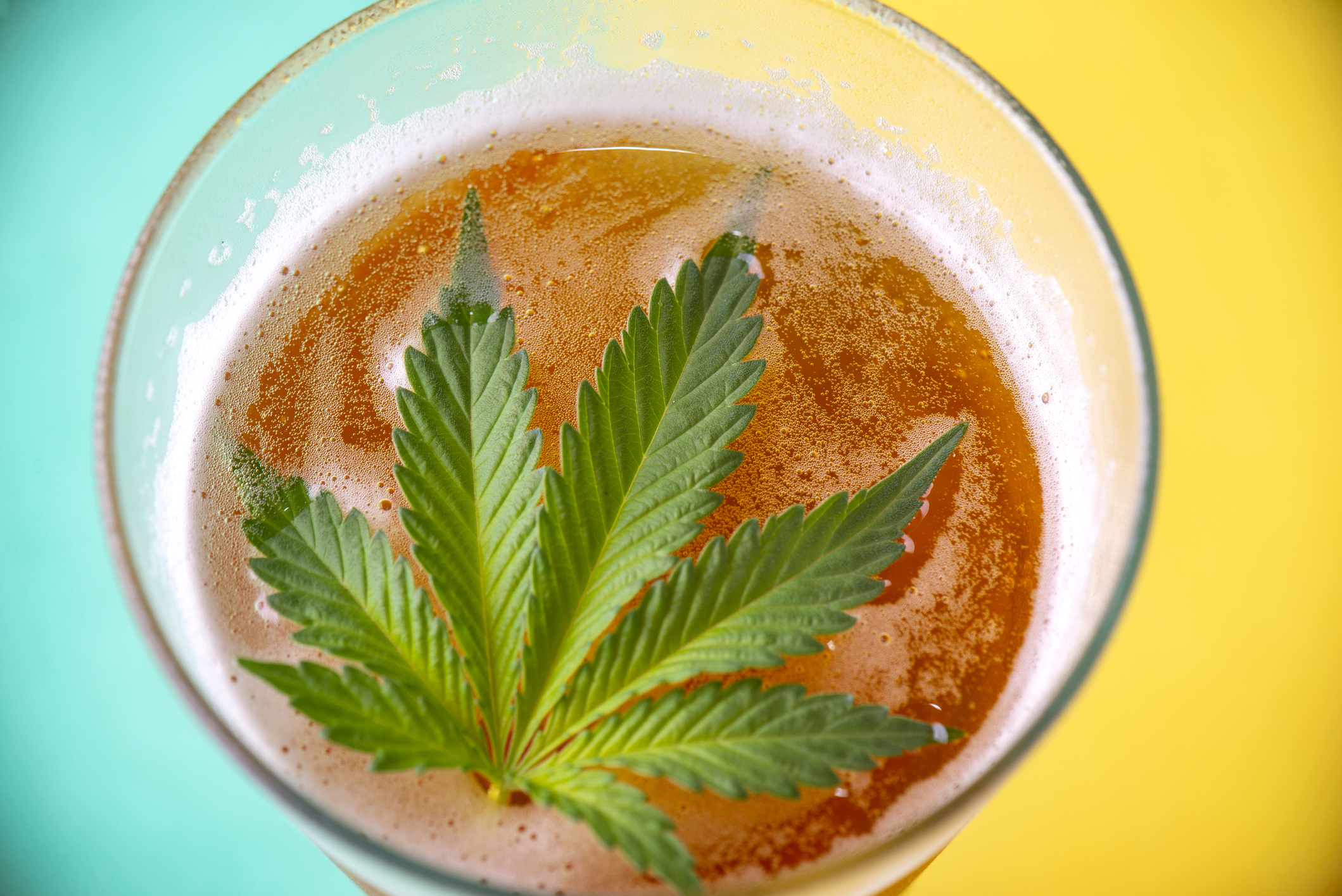
The second, and likely more important, question mark hanging over the whole thing is how, and where, people will actually use these drinks. Talk to one or two weed drink industry players and you will inevitably hear the jargony term “use cases” thrown around. It’s an umbrella phrase that refers to the way the drinks will be consumed — when, where, and how. Though their creators often tout weed beverages as alcohol replacements, they also know that it’s unlikely that people will use them in the same way.
“I don’t believe anyone’s really figured out how to get a user experience where someone’s sessioning a [cannabis] product over the course of an evening” like you would with beer, said Sutton of Tantalus Labs. Since weed drinks won’t be available for sale in bars anywhere in Canada, and only on a very limited basis in some legal US jurisdictions, weed drinks will have to develop their own use cases. What those will be depends on who you talk to: Sutton said their drinks will have a “West Coast,” craft beer vibe; Donnelly expects Hill Street drinks to be a “luxuriating” experience that someone drinks instead of a glass of wine; Wendschuh talked about his drink as one you might sip on at a party or while out at a bar, if it were available.
The biggest hurdle that weed drinks will need to clear in order to tap into a vein of mass popularity is figuring out how to market their use. Those who are bullish on the weed drink market often tout them as a healthy, no-booze alternative to drinking. Critics, however, say that’s a massive leap.
“It doesn’t occupy the space where alcohol does,” said Travis Lane, co-founder of the British Columbia Independent Cannabis Association, in an interview with MERRY JANE. “People are not going to be talkative or lose their inhibitions [by having a weed drink.] It doesn’t serve the same societal purposes.”
“We all get together and stand around in circles passing a joint. No one’s going out and saying, ‘Hey, we need to sit down and find a more sedentary version of this,’” Lane joked.
And then there are the numbers, which so far haven’t looked great for weed drinks. In Colorado, infused drinks made up somewhere in the range of only seven percent of all edible cannabis sales in 2017, according to a report from BDS Analytics. Edibles as a category made up around 23 percent of cannabis sales, meaning drinks were around 1.6 percent of sales — not exactly something to bet the house on, yet. Other reports estimate the size of the weed drinks market to only be around $200 million in 2019 — only double the total investment made in one single partnership between Tilray and AB InBev. (Reports have estimated the legal cannabis markets in North America to be worth around $12 billion USD currently.)
That’s a pretty small market for alcohol and weed drink companies to be fighting over.
“According to investment banking firm Canaccord Genuity, the US infused beverage market could be worth as much as $600 million by 2022,” wrote Sean Williams in the investor publication Motley Fool. “Even if Canada’s infused beverage potential were similar or somehow larger since it’s legal, we’re only talking about perhaps $1.2 billion to $1.4 billion in North American infused beverage sales by 2022, in my best estimate. That’s not a lot in annual sales, especially if it’s being split up among a growing number of entrants.”
From his perspective, Lane thinks that the slow uptake of edibles as a market class in the United States can be traced in part to the different effects that edibles and smoked cannabis have. “Edible substances are never more than 20%. People’s choice of consumption is still inhalation,” he said in an interview with MERRY JANE. “It’s interesting; it’s a novelty,” he said of drinkables. “I don’t know anybody who eats edibles on a regular basis.”
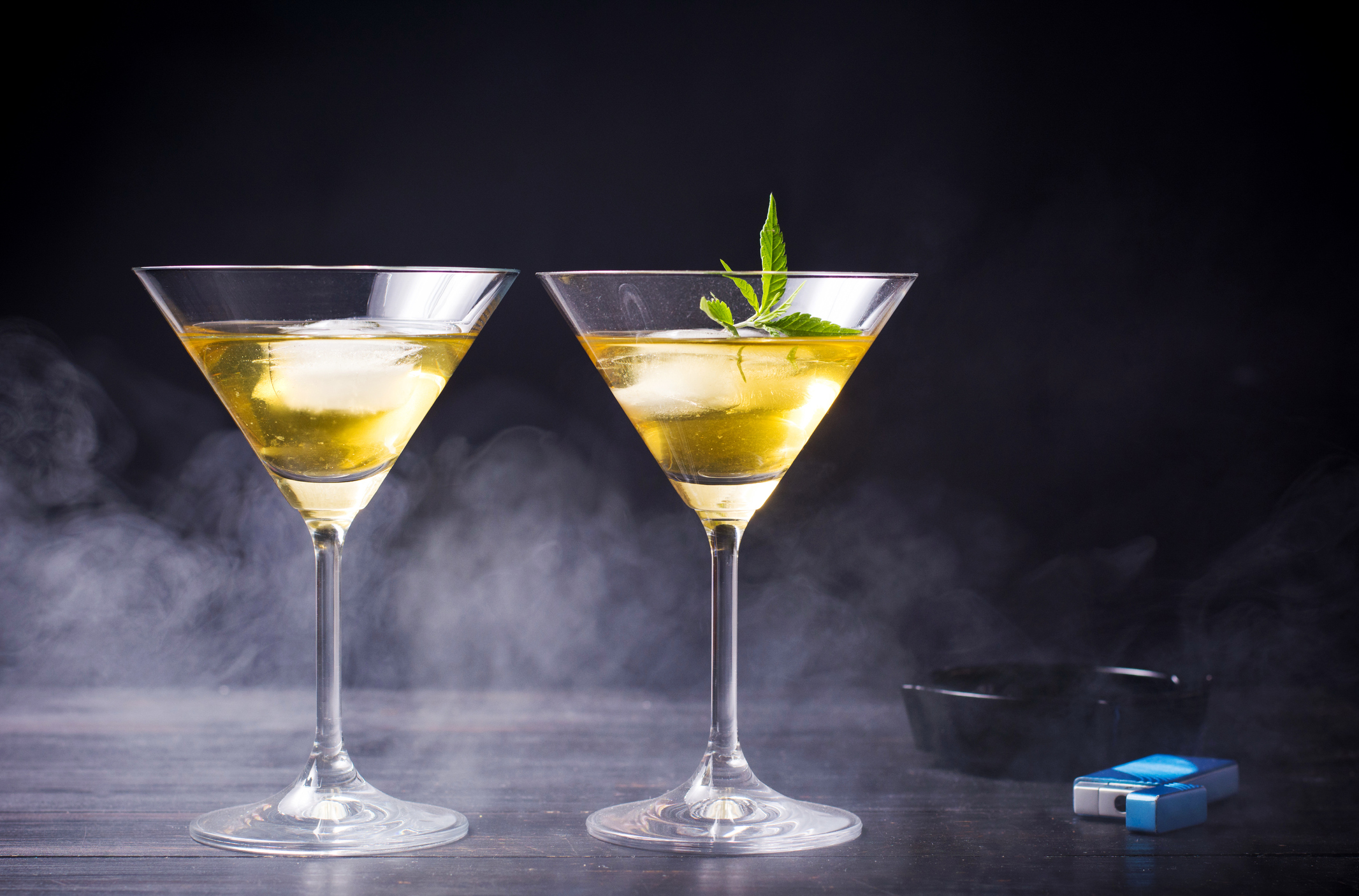
The Buzz Economy
The thing that makes weed drinks important is that there will always be weed drinks. Which is to say, as long as the industry is dominated by publicly-traded companies — ones whose financial survival depends chiefly on maintaining investor confidence — there will always be new blockbuster partnerships to pump up. New products to hype. New white whales to chase.
Publicly-traded cannabis companies are “making their money off speculation and investment, more than they are the bottom line; those aren’t profitable companies to begin with,” said Lane. “It makes sense for those big companies to take the money, and take the idea that what their investors are investing in [is] growth, expansion, and, in some cases, domination.”
Weed drinks as a concept matter because they’re an augur of what’s to come — that is, an industry that will constantly be chasing the next big thing in weed until there’s no more room to grow. And if Big Weed wants to play with the top dogs in alcohol, pharma and tobacco, it’s worth asking what kind of roads that may lead it down, what scruples growth demands you sacrifice. Historically, when you’re in basically the same commodities business as Nestle and Coca-Cola and United Fruit and Imperial Tobacco, that implacable growth drive can reverberate in parts of the world far outside the dispensary. And to a much darker tune.
Consider, for instance, that Constellation Brands, a company who last year was accused of having water defenders in Mexicali, Mexico beaten over Constellation’s plan to turn 1.8 billion gallons of Mexican water into American beer. When water gets involved, the very human consequences tend to come sharply into focus. That’s why weed drinks matter: They are both a product category and a projection of the cannabis industry’s desire for constant growth, expansion, and lucrative return on investment. Who you partner with to chase those things matters. What kind of capitalist you become to sell weed matters. With weed drinks, it’s clear that the cannabis industry has no shortage of ambition — the question is what that ambition is worth to those invested in it.
Villa, formerly of Blue Moon, was part of the first craft beer boom in the 1990s, and so while he understands people’s skepticism that weed drinks will have a mass appeal, he sees some similarities in the growth of the two markets. “Back then, it was the start of the craft beer revolution. It was such a small market that people thought it was a trend that would die off,” he said. “Nobody really gave craft beer a hope of surviving… Right now [weed drinks are] very small, but I believe it’s going to be as big as craft beer once all the regulatory issues get ironed out.”
Wendschuh, the serial entrepreneur, said that all the hand-wringing around the regulations and specifics of the weed drink market is a bit melodramatic, too. Throwing so much money and concern at an unpredictable market is a fool’s game. “People like to get their panties in a bunch,” he added. “But at the end of the day, they’re letting us sell weed.” And really, no one has ever needed billions of dollars to do that.
Follow Kieran Delamont on Twitter


